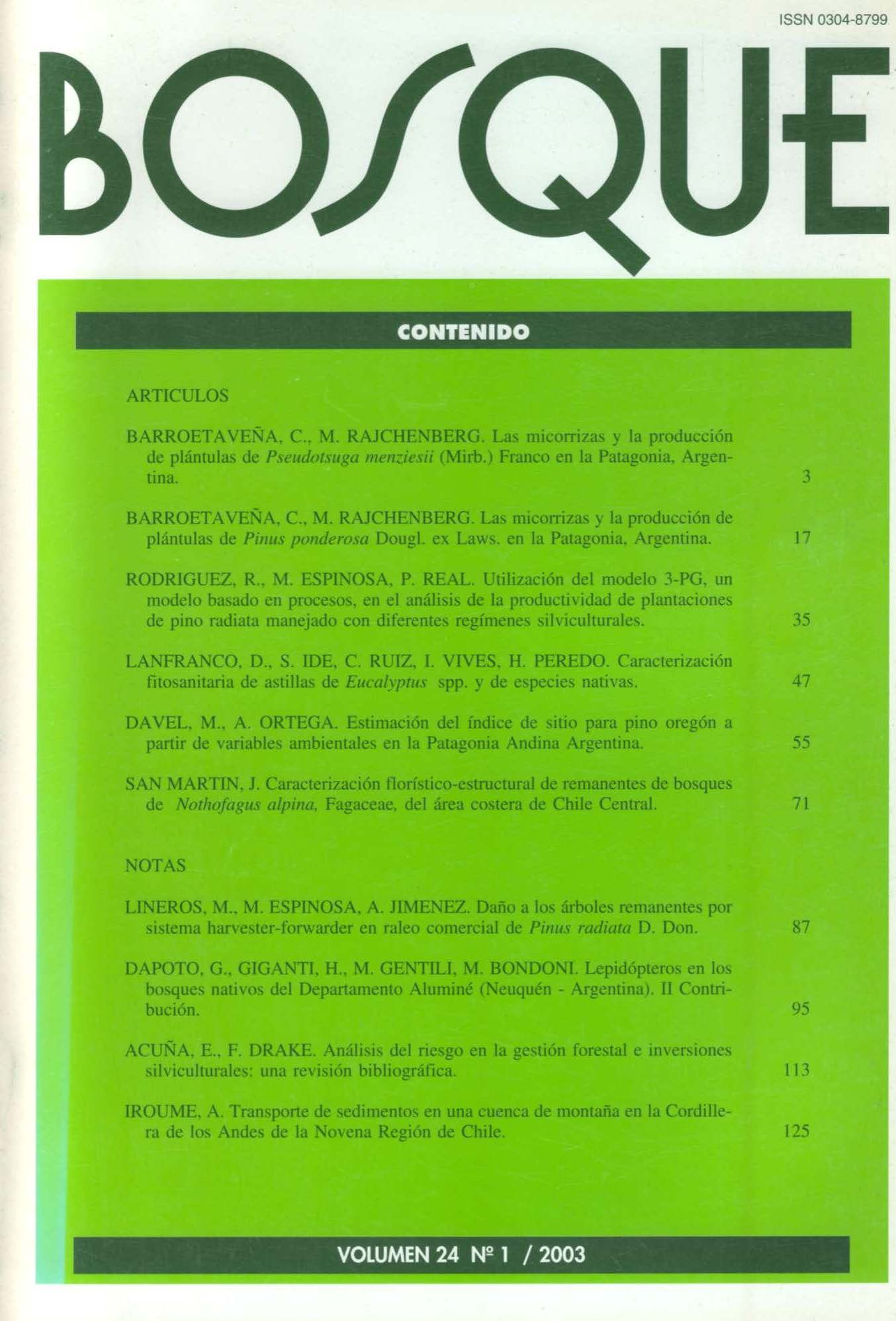Mycorrhizas and Pseudotsuga menziesii (Mirb.) Franco seedlings production in Patagonia, Argentina
Main Article Content
Abstract
A survey was conducted to study the mycorrhizal status and its relationship with morphometric parameters in bareroot 1+1, 1+2, and 2+1 Douglas-fir (Pseudotsuga menziesii [Mirb.] Franco) seedlings from five nurseries in the Río Negro and Chubut provinces (Argentina). The species of mycorrhizal fungi fruiting in each of these were identified. Mycorrhizal colonization percentages were moderate (26–50%), although three crops showed high colonization rates (51–75%). Eighteen mycorrhizal morphotypes were identified; nursery morphotype diversity ranged between 6 and 11, with four morphotypes common to all of them. The highest levels of mycorrhizal colonization corresponded to nurseries with clay or fine particulate soils, into which humus from plantations had been incorporated. There were significant correlations between mycorrhization rate, dry-root weight, and morphotype diversity per plant, indicating that seedlings with higher levels of colonization had better root development and more associated fungal species. Overall, four species of mycorrhizal fungi were identified in the root systems. Tuber californicum Harkness and Endogone lactiflua Berkeley & Broome were recorded for the first time in this area.

